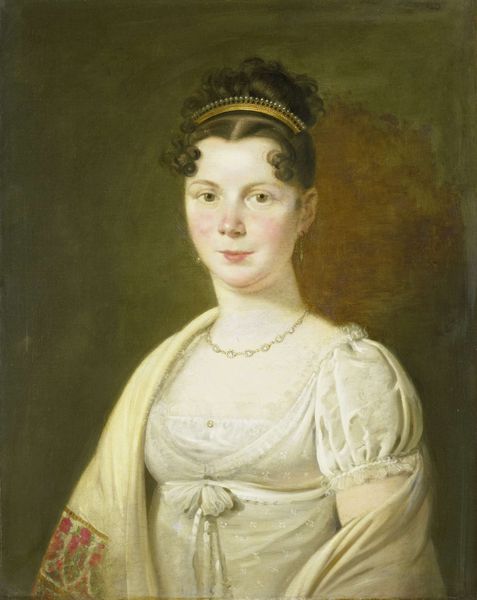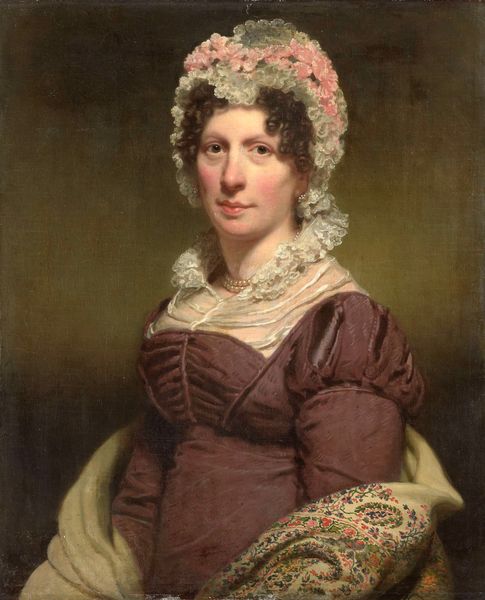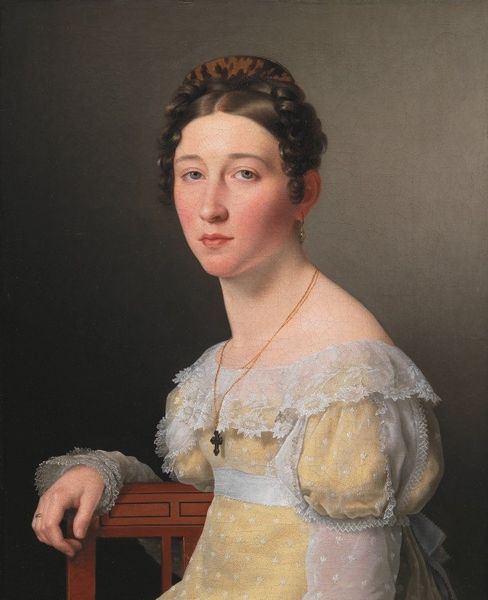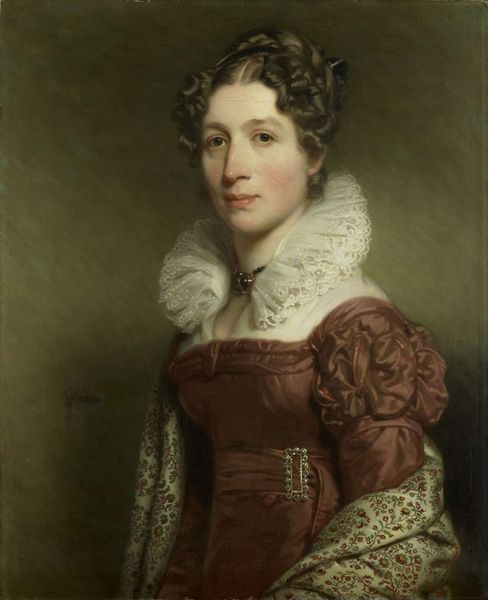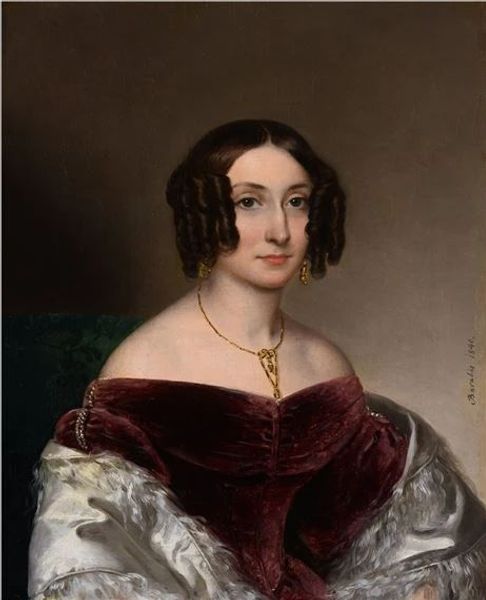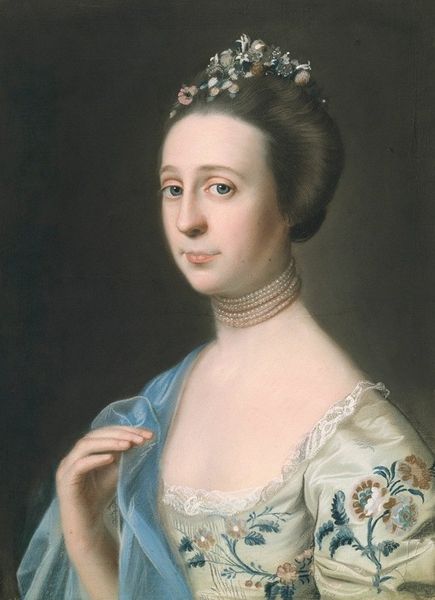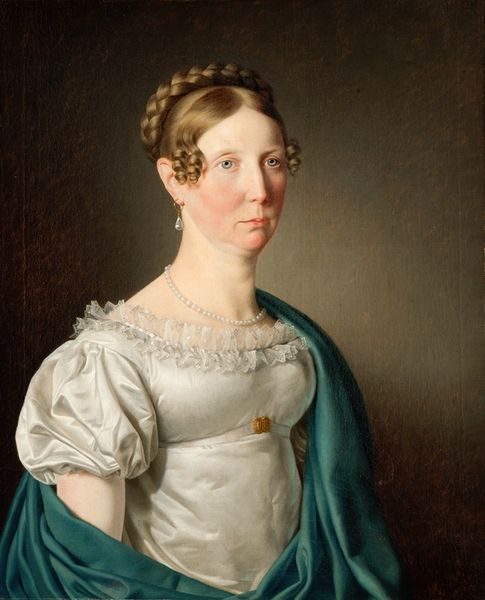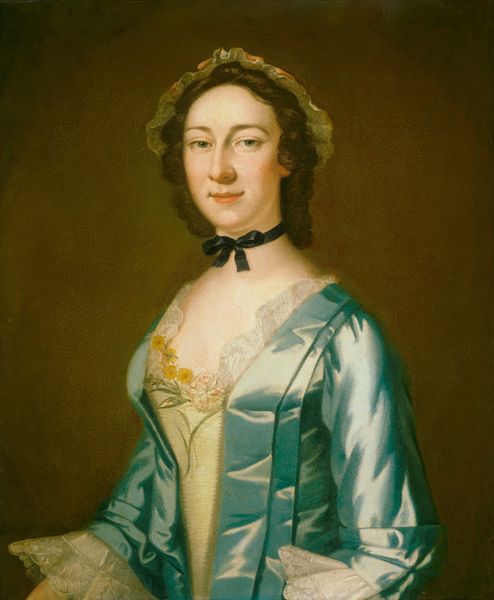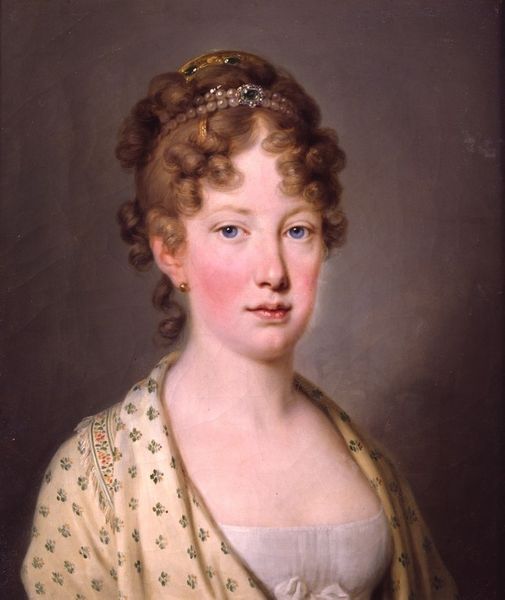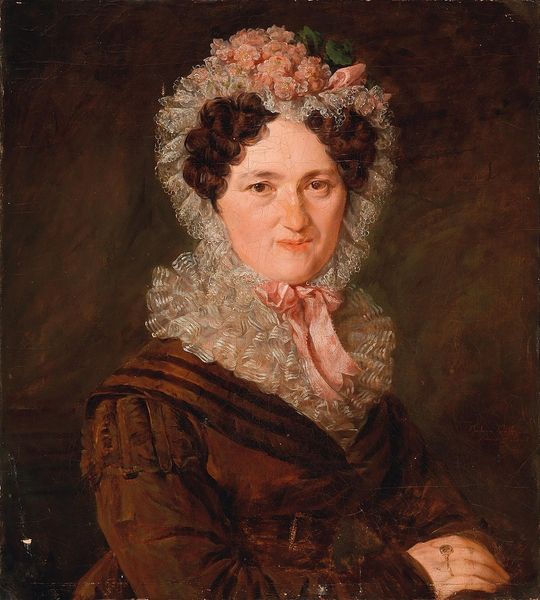
Suzanne Juel. The Artist’s Sister-in-Law and later to Become his Third Wife 1823
0:00
0:00
painting, oil-paint
#
portrait
#
figurative
#
painting
#
oil-paint
#
romanticism
#
academic-art
Copyright: Public Domain: Artvee
Curator: This is "Suzanne Juel. The Artist’s Sister-in-Law and later to Become his Third Wife," a portrait created in 1823 by Christoffer Wilhelm Eckersberg. Editor: A rather understated portrait, wouldn’t you say? It’s immediately striking how soft and almost muted the palette is, all creams and pinks, offset by a darker background that emphasizes the sitter’s delicate features. Curator: Well, Eckersberg was working within the established conventions of academic art. This piece shows us not only the artistry involved, but the role of portraiture in defining social status within that particular culture. A future wife being immortalized through oil paints is more than a mere visual record; it represents power dynamics and social expectations within artistic patronage. Editor: Absolutely, though focusing on purely formal terms, the lighting is masterfully controlled, and highlights the delicate texture of her skin and the ruffles around her neck. The details, albeit subdued, draw one's attention into the almost classical balance. Curator: Think about where the pigments were sourced, though. What conditions did the people mining those colors labor under? We are engaging with the complex web of colonialism and exploitation when considering even the materials that contributed to rendering this beautiful portrait. The cotton and linen production behind that pink dress has its history too. Editor: I admit my perspective leans toward the composition, the way the light and shadow play and draw focus onto her face. Even if understated, there is something uniquely profound, perhaps romanticist in spirit, which speaks directly to her inner life and our viewing experience. Curator: Even her hair, meticulously coiffed, serves to highlight the social construction of beauty at that moment. Who had access to creating or adopting these hairstyles? This becomes crucial if one understands history through these material practices and visual signals. Editor: Yes, yes, history matters! But for a moment consider, apart from those societal narratives, how Eckersberg plays on line and contour, with her slightly inclined head evoking the impression of intimate connection between the artist and sitter. Her expression, demure and introspective, adds depth to the entire composition. Curator: Ultimately, to engage with the historical forces that shaped the artmaking conditions is part of fully understanding any portrait. And even how Eckersberg uses conventions serves the ideological currents. Editor: So it does, in that the portrait still quietly resonates across centuries given his artistic craft!
Comments
No comments
Be the first to comment and join the conversation on the ultimate creative platform.
